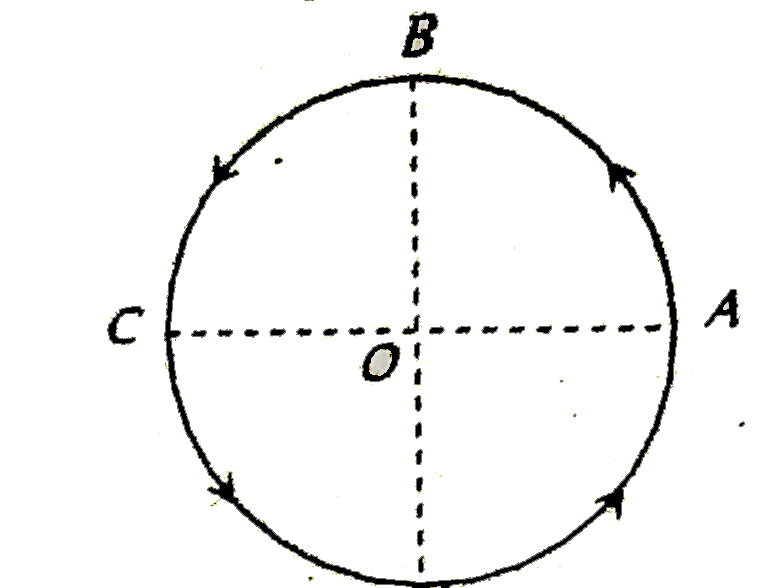A body is revolving with a uniform speed v in a circle of radiusr . The tangential acceleration is
vr
v2r
Zero
vr2
The correct Answer is:C
To solve the problem of finding the tangential acceleration of a body revolving with uniform speed v in a circle of radius r, we can follow these steps:
Step 1: Understand the Concept of Tangential Acceleration
Tangential acceleration is defined as the rate of change of the speed of an object moving along a circular path. It is given by the formula:
at=dvdt
where dv is the change in velocity and dt is the change in time.
Step 2: Analyze the Given Conditions
In this problem, the body is revolving with a uniform speed v. This means that the speed of the body does not change over time. Therefore, the change in speed dv is equal to 0.
Step 3: Substitute the Values into the Formula
Since the speed is constant:
dv=0
Now, substituting this into the formula for tangential acceleration:
at=dvdt=0dt=0
Step 4: Conclusion
Thus, the tangential acceleration at of the body revolving with uniform speed v in a circle of radius r is:
at=0
Final Answer
The tangential acceleration is 0.
---
Tangential acceleration is defined as the rate of change of the speed of an object moving along a circular path. It is given by the formula:
at=dvdt
where dv is the change in velocity and dt is the change in time.
In this problem, the body is revolving with a uniform speed v. This means that the speed of the body does not change over time. Therefore, the change in speed dv is equal to 0.
Since the speed is constant:
dv=0
Now, substituting this into the formula for tangential acceleration:
at=dvdt=0dt=0
Thus, the tangential acceleration at of the body revolving with uniform speed v in a circle of radius r is:
at=0
The tangential acceleration is 0.
Topper's Solved these Questions
Similar Questions
Knowledge Check
If a body is moving with a uniform speed v in a circle of radius 'r', then the angular acceleration of the body will be
Av/rBv2r along the radius and away from the centreCv2r along radius and toward centreDzeroFigure shows a body of mass m moving with a uniform speed v along a circle of radius r . The change in velocity in going from A to B is
 Av√2Bv/√2CvDZero
Av√2Bv/√2CvDZeroA particle is moving at uniform speed 2ms−1 along a circle of radius 0.5m.The centripetal acceleration of particle is
A1ms−2B2ms−2C4ms−2D8ms−2
A body revolves with constant speed v in a circular path of radius r. the magnitude of its average acceleration during motion between two points in diametrically opposite direction is
View SolutionCentripetal force (F) on a body of mass (m) moving with uniform speed (v) in a circle of radius (r ) depends upon m, v and r. The formula for the centripetal force using theory of dimensons.
View SolutionA body moves on a horizontal circular road of radius of r, with a tangential acceleration aT. Coefficient of friction between the body and road surface is μ. It begin to slip when it's speed is v, then :
View Solutionwhen a body performs a U.C .M Its tangential acceleration is
View SolutionIF a body moves with constant speed along a curved path,its tangential acceleration is
View Solution
